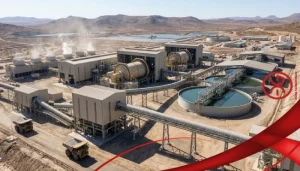Silver balls, commonly known as grinding media with a shiny, silver-like appearance, are essential components in ball mills and other milling equipment used across industries like mining, cement, ceramics, and chemicals. Typically made from high-chrome steel or stainless steel, these balls are not pure silver but are named for their polished, silver-colored finish. They offer durability, corrosion resistance, and efficient grinding capabilities. This guide explores what silver balls are, their composition, how they are used in milling, their applications, benefits, and practical strategies for optimizing their performance in industrial grinding processes.
What Are Silver Balls?
This balls are spherical grinding media used in ball mills to crush and grind materials into fine powders. The term “silver balls” refers to their shiny, silver-like appearance, which comes from materials like high-chrome steel (10–13% chromium) or stainless steel, rather than actual silver, which is too soft and expensive for industrial grinding. These balls are designed to withstand abrasive conditions while delivering consistent grinding performance.
Key Characteristics of Silver Balls
Material: High-chrome steel for high wear resistance, stainless steel for corrosion resistance, or other alloys for specialized applications.
Size: Range from 5 mm to 150 mm, depending on the milling requirements (smaller for fine grinding, larger for coarse grinding).
Hardness: 58–65 HRC (Rockwell Hardness) for high-chrome steel, ensuring durability under abrasive conditions.
Surface Finish: Polished, silver-like finish reduces friction and enhances grinding efficiency.
Density: Approximately 7.8–8.0 g/cm³, providing strong impact forces for effective particle size reduction.
Types of Silver Balls
- High-Chrome: Ideal for abrasive materials like ores due to their high hardness and wear resistance.
- Stainless Steel: Used in wet grinding or high-purity applications like chemicals or food processing.
- Forged Steel Balls: Provide robust performance for heavy-duty grinding in mining or cement production.
- Specialty Alloy Silver Balls: Custom alloys for niche applications requiring specific properties, such as enhanced corrosion resistance.
Silver balls are critical for achieving fine, uniform powders in various milling processes.
How Silver Balls Are Used in Milling
Silver balls function as grinding media in ball mills, tumbling mills, or other milling equipment, where they crush and grind materials through impact and attrition forces.
- Impact Grinding: As the mill rotates, the balls collide with the material, breaking it into smaller particles.
- Attrition Grinding: Friction between the balls and the material further reduces particle size through abrasion.
- Rotation Speed: Mills operate at 60–80% of critical speed (Nc = 42.3/√D, where D is the drum diameter in meters), typically 20–40 RPM for industrial mills or 50–100 RPM for smaller mills.
- Wet or Dry Grinding: Silver balls are used in both wet (slurry-based) and dry grinding, depending on the material and application.
- Batch or Continuous Operation: Used in batch mills for small-scale processing or continuous mills for high-throughput operations.
For example, in a mining operation, 40 mm high-chrome silver balls might be used in a wet ball mill rotating at 30 RPM to grind gold ore into a slurry with 80% passing 75 micrometers.
Applications of Silver Balls
Silver balls are versatile grinding media used in a range of industries. Key applications include:
1. Mining Industry
Ore Processing: Grinds ores like gold, copper, or iron into fine particles for processes like flotation or leaching.
Example: 50 mm high-chrome silver balls process 500 tons/hour of copper ore slurry in a wet ball mill, achieving fine particle sizes.
2. Cement Production
Clinker Grinding: Pulverizes cement clinker into fine powder for construction-grade cement.
Example: 60 mm forged steel silver balls grind clinker in a dry ball mill to a fineness of 3,500 cm²/g (Blaine).
3. Ceramics Industry
Powder Preparation: Grinds clay, silica, or additives into fine powders for tiles, pottery, or advanced ceramics like alumina.
Example: 20 mm stainless steel silver balls process ceramic slurries to particle sizes below 50 micrometers for glaze production.
4. Chemical and Pharmaceutical Industries
Pigment and Compound Processing: Grinds chemicals, pigments, or active pharmaceutical ingredients (APIs) into fine dispersions.
Example: 10 mm stainless steel silver balls grind pigments to 10–20 micrometers for high-quality paint formulations.
5. Laboratory and Research Applications
Material Testing: Used in small-scale mills to develop new materials or test grinding properties.
Example: 5 mm stainless steel silver balls grind 100 g of experimental alloy to 100 micrometers in a planetary mill.
This balls are valued for their ability to deliver consistent, high-quality grinding results across diverse applications.
Benefits of Silver Balls
Silver balls offer several advantages that make them a preferred choice for milling:
High Wear Resistance: High-chrome steel silver balls withstand abrasive materials, reducing replacement frequency.
Corrosion Resistance: Stainless steel silver balls perform well in wet grinding, minimizing rust and contamination.
Efficient Grinding: Their high density (7.8–8.0 g/cm³) ensures strong impact forces for rapid particle size reduction.
Polished Finish: Reduces friction, improving grinding efficiency and reducing energy consumption.
Versatility: Suitable for both wet and dry grinding, handling materials from ores to pharmaceuticals.
These benefits make silver balls a reliable and efficient choice for various milling processes.
Choosing the Right Silver Balls for Your Needs
Selecting the appropriate silver balls depends on your milling requirements:
Material Type: High-chrome steel for abrasive materials like ores, stainless steel for wet or high-purity applications like chemicals.
Ball Size: 5–20 mm for fine grinding (e.g., pigments or pharmaceuticals), 50–150 mm for coarse grinding (e.g., clinker or ores).
Grinding Conditions: Stainless steel for wet grinding, high-chrome for both wet and dry applications.
Mill Type: Compatible with ball mills, tumbling mills, or planetary mills, depending on scale and application.
Alpha Grinding Media offers high-quality high-chrome and stainless steel silver balls tailored for various grinding applications.
Frequently Asked Questions
Silver balls, typically made from high-chrome or stainless steel, are vital grinding media for producing fine, uniform powders in industries like mining, cement, ceramics, and chemicals. Their durability, corrosion resistance, and polished finish make them ideal for both wet and dry grinding applications. By selecting the right ball material and size, optimizing mill settings, managing grinding conditions, and maintaining equipment, you can maximize the performance of silver balls in your milling processes. Understanding their composition, applications, and optimization techniques empowers you to achieve efficient and high-quality grinding results, whether you’re processing mineral ores or producing specialty chemical dispersions.
Frequently Asked Questions
Silver balls are named for their shiny, silver-like appearance, typically from high-chrome steel or stainless steel, which offer durability and corrosion resistance unlike soft, expensive silver.
Silver balls are used in mining (ore processing), cement (clinker grinding), ceramics (powder preparation), chemicals (pigment production), and laboratory research for their durability and versatility.
Use high-chrome silver balls for abrasive materials, maintain optimal rotation speeds (60–80% of critical), and replenish media every 500–1,000 hours based on material abrasiveness.
Yes, stainless steel or high-chrome silver balls are ideal for wet grinding due to their corrosion resistance, making them suitable for slurries in mining, ceramics, or chemical processing.





